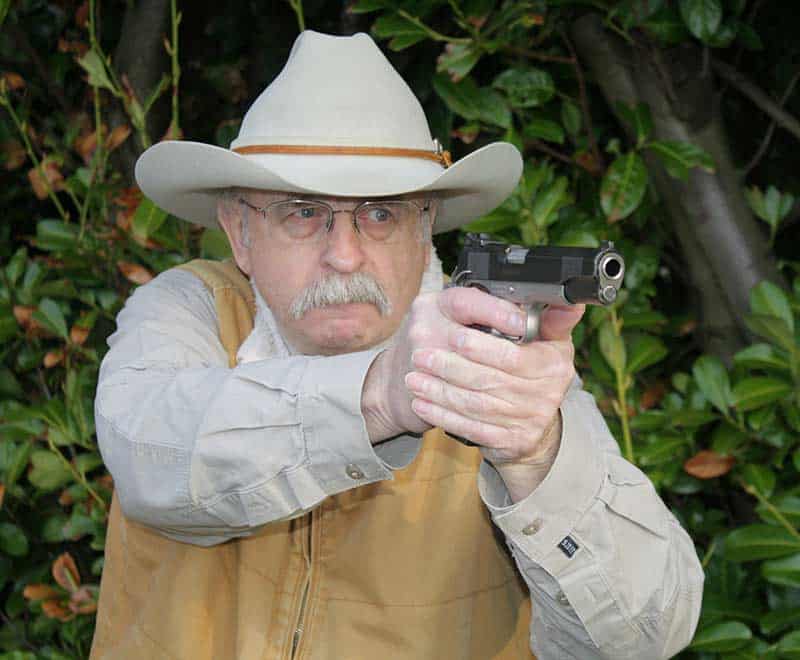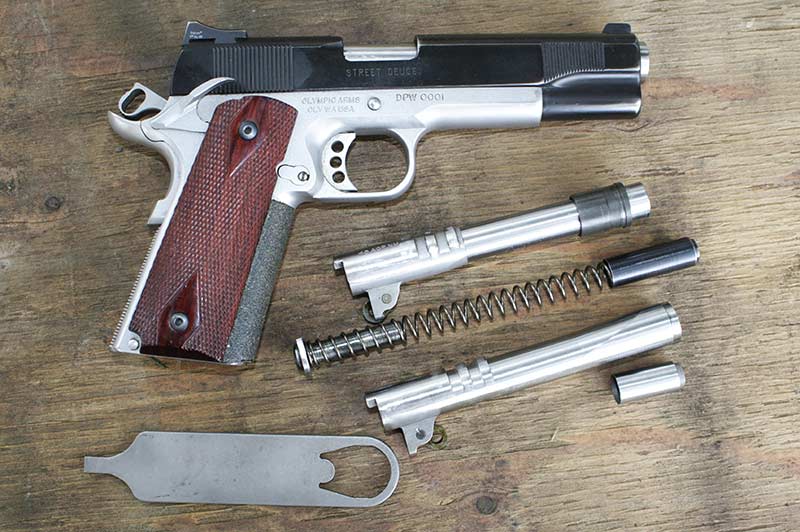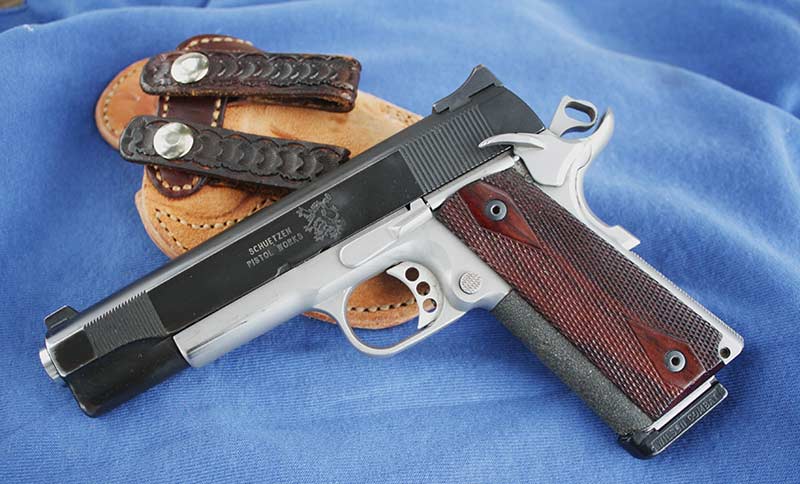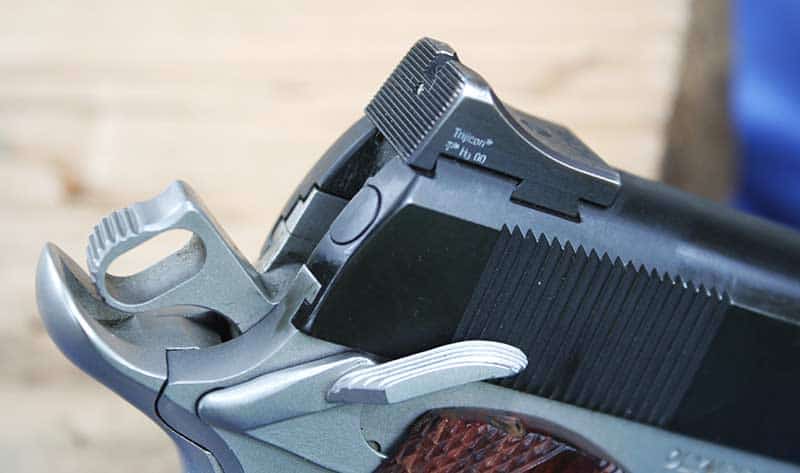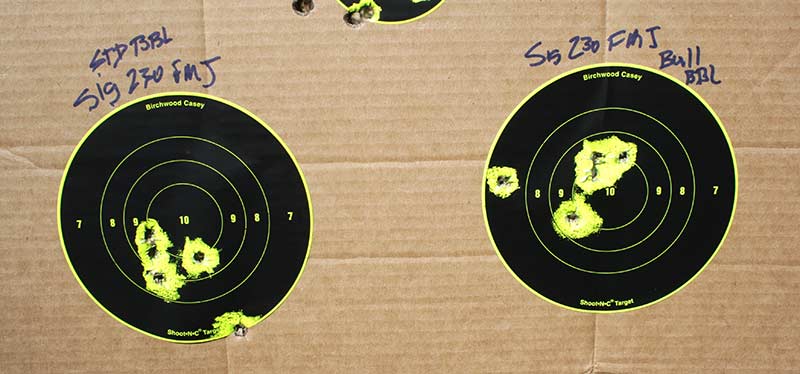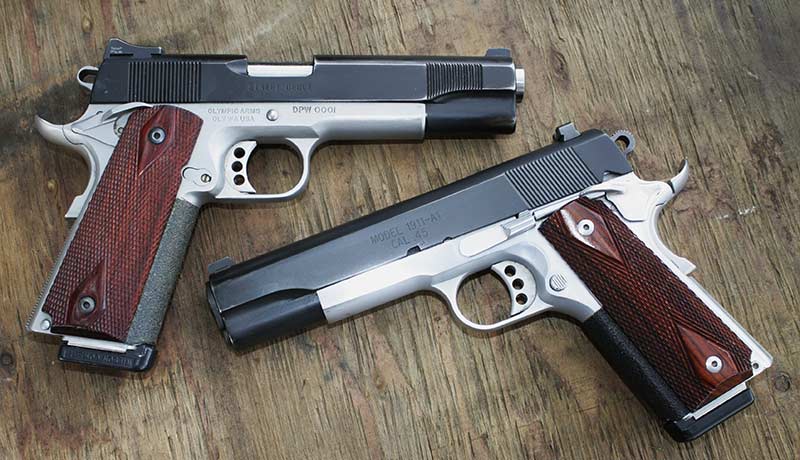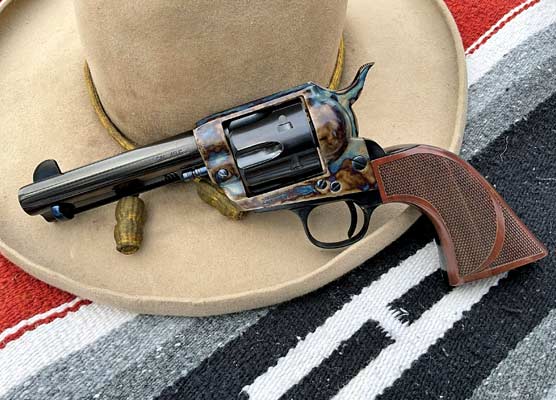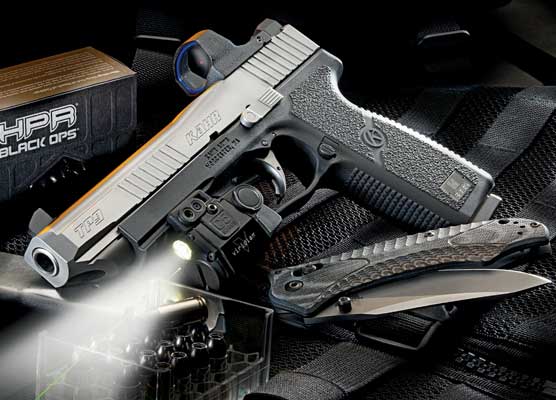One Of A Kind
The Pistol And The Man Who Built It
The whole thing began as a kind of misunderstanding, I think, but it led to a lasting friendship and the ownership of a simply phenomenal pistol from the hands of a craftsman.
Going back almost 25 years, I was working on an article about what someone should expect to pay for a customized Model 1911; nothing fancy, no racegun features, just cocking serrations fore and aft, tritium sights with the front dovetailed, rather than pinned, in the slide, beavertail grip safety with a bump and ambidextrous thumb safety. Oh, and two-tone with a stainless frame and blue slide. Y’know … nothing extravagant.
I believe I interviewed people from four or five different outfits, explaining how this was for an article. Included in the bunch was Olympic Arms in Lacey, Washington, with its custom shop known as Schuetzen Pistol Works. This was the home team, so to speak. I knew some of the guys and, well, it would not have been right to leave them out. Suffice it to say, after all this time, it was a smart move.
A couple of weeks later, I made a 60-mile drive down Interstate 5 for a chat with Bob Schuetz, founder and CEO at Olympic Arms, a company which produced rifles on the AR platform. Olympic was responsible for some of the design innovations we now find on modern semi-automatic rifles from other manufacturers.
Bob was a guy I liked instantly when we first met some years ago. He could be abrupt, gruff, understanding, worldly wise and funny, all in the course of a few minutes. If he liked something, you knew it. If he thought something was nuts, you would know that as well. About halfway through the conversation, he picked up the phone and said, “Bring it over.” A couple of minutes later, Richard Niemer walked through the office door with what was — and remains, at least in my eyes — one of the most beautiful renditions of a Model 1911 I’d ever seen. And it was almost exactly what I’d had in mind for the story.
Niemer had formerly worked for the original Detonics when it was founded and based in Bellevue, Washington. Suffice it to say, this guy knew his stuff when it came to the .45-caliber semi-automatic pistol designed by John Moses Browning. When Detonics moved on, Niemer headed for Lacey, where his pistol work was, in my humble opinion, second to none.
Richard Philip Niemer, Jr. was born in Detroit, Michigan in April 1950, making him only a few months younger than me. He had a slight resemblance to actor Sam Elliott, and the calm demeanor of a perfectionist, who, as I later learned from others, was a very good pistol shot. One of his longtime pals, John Solheim, who retired from the Pierce County, Washington Sheriff’s Department, was kind enough to help me with some of the background here. Niemer referred to John as “Speed.” Nicknames tend to stick.
The ‘Street Deuce’
What Niemer handed me that morning was a spruced-up rendition of a pistol he dubbed the “Street Deuce” for a couple of reasons. First, it was two-toned, as I had mentioned during the interview. Second, it came with two barrels, which was not part of my original design specs. One was a bushingless bull barrel and the other was a standard barrel with match-grade bushing. Stamped on the right side was the serial number: DPW 0001.
The finished product wears checkered double-diamond grip panels. It has a flat mainspring housing. The ejection port is slightly lowered and flared. Over the years, I can only recall a couple of jams, later attributed to bad ammunition or magazines or just a tired gun hand. The trigger let-off was crisp, and I couldn’t detect any stiffness or creep.
Around the front of the grip frame was a strip of rough “skateboard” tape, which Niemer suggested to guarantee a firm, but not uncomfortable, grip in the Northwest’s traditionally wet climate, since one thing my imaginary “custom” gun’s features was to not have was checkering the front strap. Then and now, I can’t stand checkering on the front of a grip. The sights were Heinie “Slant Pro” with a single tritium lamp each, on the rear and the front. As it turned out, they were perfectly aligned to shoot dead on at 25 yards, a fact I learned over time by clobbering tin cans and anything else at which I fired. Recent treks to the range to test some handloads confirm it’s capable of hitting, or near-missing, chunks of orange clay disks at 50 yards, shooting off a solid rest.
Instead of a traditional deeply-blued slide, Niemer had gone one better, doing the slide with a remarkable black Parkerized finish which has stood up incredibly well over the years. It was so good, I later had my Springfield Model 1911 slide finished with the same stuff. It is also a two-tone pistol, and the results are essentially a matched set.
Okay, it looked good. But would it shoot? Oh, yeah! With 230-grain FMJs, my first go-round was rather impressive, and that was with the standard barrel and bushing installed. Later, after swapping out the barrels, the thicker tube with its beveled crown and full-length guide rod was deadly accurate. Off a bench at 15-20 yards, a steady hand could easily punch holes in the bottom of an empty bean can all day long. A rough estimate would be impossible, so, suffice to say several thousand rounds have gone through this handgun.
One of a Kind
This Street Deuce may resemble other pistols, but it is unique. There is no other pistol exactly like it. It occupies an honored spot in my gun safe when I’m not shooting it. The finish is slightly worn, which gives it character, but what’s inside still works like a quality watch.
I typically leave the standard barrel installed, although with some loads, the bull barrel admittedly shoots tighter groups within 25 yards. I’ve carried it in a couple of different holsters I personally built over the years, and one or two others.
I’ve fired 185-grain JHPs and 230-grain FMJs over HP38 and 230-grain plated bullets ahead of CFE Pistol with good results. Factory loads run through this sidearm with always pleasing results, as the accompanying targets show.
When it comes to “one of a kind,” the same would have to be said about Niemer.
One of the toughest things about living as long as I have is the friends who leave ahead of you. The past year has seen us lose John Taffin and Mike “Duke” Venturino, and both will be greatly missed. They were men who were skilled in their fields, and for what it’s worth, they don’t make ‘em like that anymore.
Richard Niemer was out of a similar mold. He has been gone for 11 years and about 5 months. One morning in early December 2013, one of the guys at Olympic Arms called me to say Richard had passed away. He had apparently taken a bad spill down a flight of stairs at home and never got up.
Here was a man who had worked on three (or was it four?) of my pistols. We had traded stories about this or that guy we mutually knew, talked about what makes a good and not-so-good pistol. If I had a question about something, I could call him up, and he had the answer. Once, when I did a story on Olympic Arms, Niemer gave me the walk-away quote in his inimitable deadpan style: “We’ve been through fires, floods and an earthquake (the 6.8 quake of Feb. 28, 2001 happened on a faultline almost directly beneath the company’s location, about 30 miles down). I guess that leaves locusts.”
Last Gun Out
Solheim told me via text message about the last pistol Richard built. It was a Commander-size gun in .45 ACP with the same trigger and wraparound tape as he put on my gun.
It was also a two-tone specimen with a personalized serial number, a set of grip panels Richard personally crafted and the bull barrel. The rear sight was adjustable and the front sight was pinned. The slide was finished with the same black Parkerizing, and I’d bet the pistol shot dead-on at 25 yards.
Sadly, Olympic Arms ceased operations in February 2017 and closed its doors entirely in 2020, shortly after Bob Schuetz passed away. He was 91 years old. Like Richard Niemer, Bob was one of a kind.

